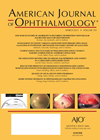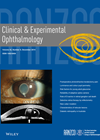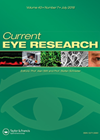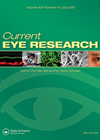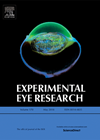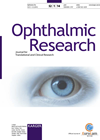
Journal Reviews
Oral omega-3 fatty acid treatment for dry eye in contact lens wearers
This study evaluates the effect of dietary omega-3 fatty acid supplementation of dry eye symptoms, tear film tests, and conjunctival impression cytology in patients with contact lens wear-associated dry eye. In this randomised double-blind, multi-centred trial, contact lens wearers (n=...
Is there an association between dry eye disease and depression and anxiety?
Dry eye disease is a widespread ocular surface condition (prevalence 5.5-33.7%) that has been previously linked to systemic diseases, such as Sjogren, rheumatoid arthritis and more recently possibly also depression, in small population-based studies. The authors’ aim was to investigate...
Effect of topical diclofenac on postoperative PRK pain: RCT
A major disadvantage of excimer laser photorefractive keratectomy (PRK) is pain and discomfort after the surgery, which is thought to be due to damage to corneal sensory nerve fibres or local release of inflammatory substances. Pain only resolves once corneal...
Precision and accuracy of TearLab osmometer
Measuring tear osmolarity has been identified as a potential method for objectively diagnosing dry eye. TearLab osmolarity system is an in situ osmometer which may be a promising candidate for clinical use as it is portable and only requires a...
Short-term effects of intravitreal bevacizumab on the cornea
Bevacizumab has been extensively used to treat macula oedema and neovascularisation of the retina and it has also been useful in the management of corneal neovascular diseases. This prospective study aimed to provide more information on the effect bevacizumab may...
Meibomian gland dropout in patients with dry eyes
In this prospective study 264 patients with symptoms of dry eye were examined with a non-contact meibography system to assess the morphological changes in their meibomian glands. These patients were not previously diagnosed with meibomian gland dysfunction and patients with...
Ovarian hormones drive onset of Sjogren’s disease in mice
Sjogren’s syndrome (SS) is a debilitating, sight-threatening, systemic autoimmune disease with no effective treatment available. SS is characterised by lacrimal gland lymphocytic infiltration and epithelial cell death, as well as by the presence of serum autoantibodies. Patients have severe dry...
Do topical steroids improve visual outcome in the treatment of bacterial keratitis?
The use of topical corticosteroids as an adjunctive treatment to antibiotics in the management of bacterial keratitis remains a controversial issue. The results of the Steroids for Corneal Ulcers Trial (SCUT) – a randomised, double-masked, placebo-controlled trial that recruited patients...
Squamous metaplasia of conjunctival epithelial cells with soft contact lens wear versus non-lens wearers
Conjunctiva is composed of non-squamous epithelial cells interspersed with goblet cells, which is a secretory epithelium. Squamous metaplasia is a transformation to non-secretory epithelium, ‘keratinised’ and enlargement of the conjunctival non-goblet cells and relatively shrunken nuclei are seen on impression...
Accelerated (9mW/cm2) corneal collagen cross-linking for keratoconus
This is one of many studies published / to be published on corneal collagen cross-linking that has a treatment time of 10 minutes compared to the previous Dresden protocol of 30 minutes to halt progression of keratoconus. Much has changed...
Inhibiting high-risk corneal allografts
The cornea is an immune privileged site and as such corneal transplants are very successful. However, in situations where this privilege is lost the failure rises substantially. To combat rejection inhibition of the immune responses depends on steroids and other...
Effect of preservative free fluoroquinolones on human corneal epithelial cells in vitro
Fluoroquinolones, including second generation (ofloxacin and ciprofloxacin), third generation (levofloxacin and tosufloxacin) and fourth generation (gatifloxacin and moxifloxacin), are a group of bactericidal agents used to treat multiple ocular infections. The third and fourth generation fluoroquinolones have enhanced Gram-positive activity...


